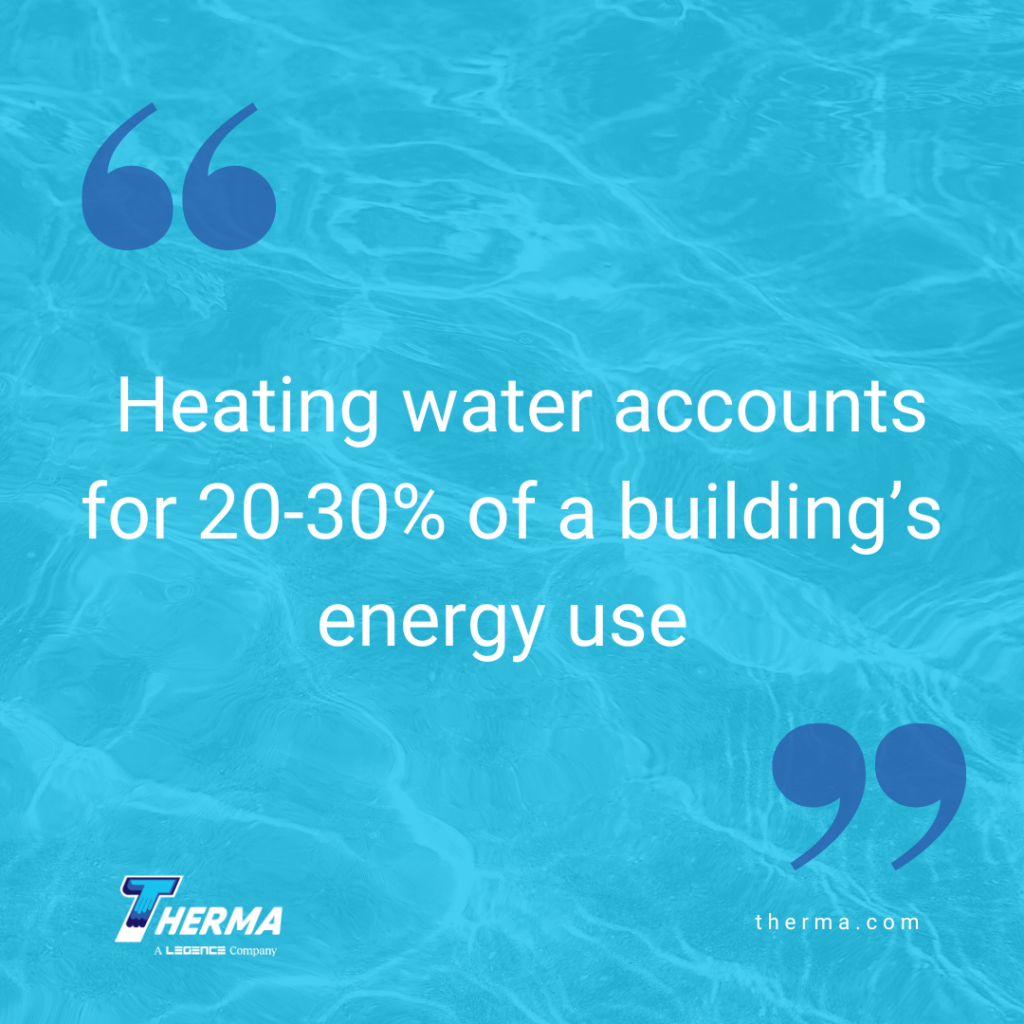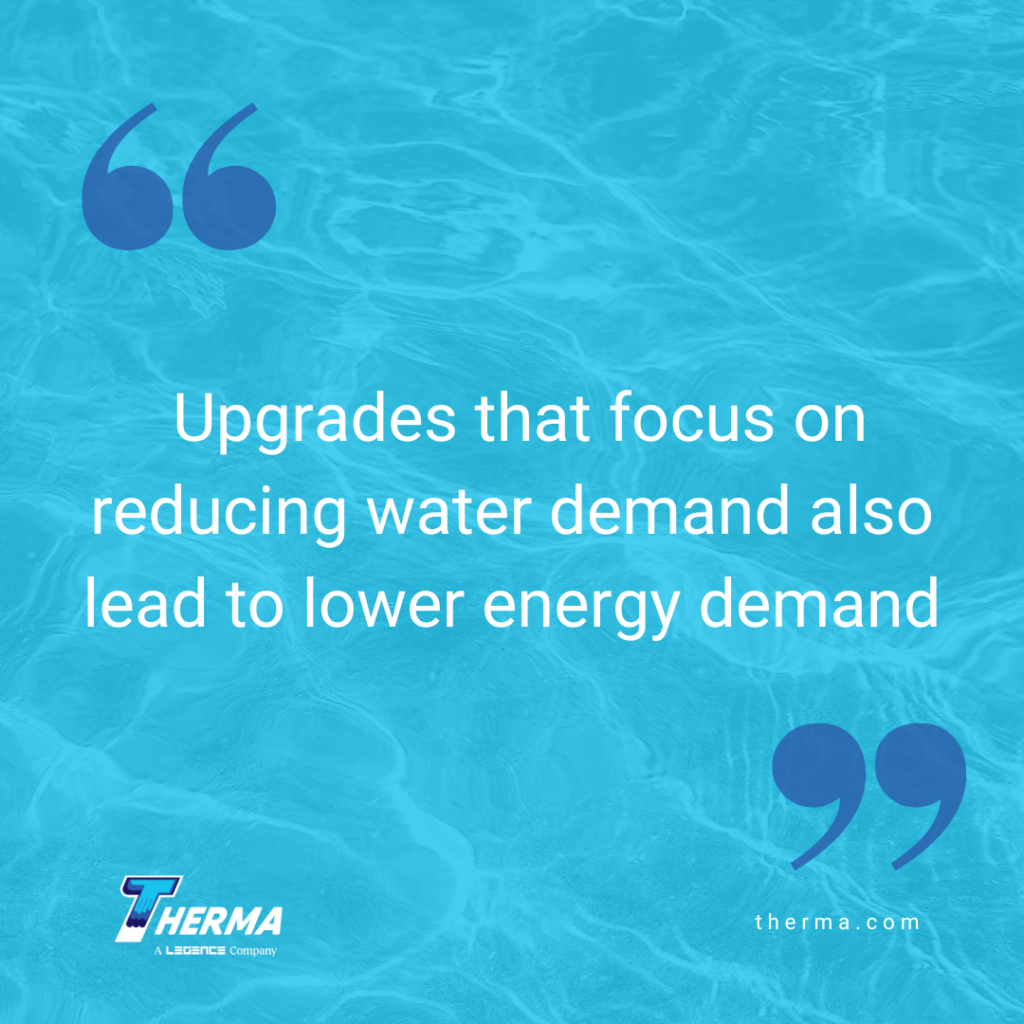by Patti Dees
Exploring energy-efficient plumbing options allows owners and managers to improve their facilities in several ways. Plumbing upgrades can save energy, water, time, and money.
How Plumbing Upgrades Can Improve Energy Efficiency
In plumbing, water efficiency is energy efficiency. Upgrades that focus on reducing water demand also lead to lower energy demand. If a building uses less water, the energy used for pumps and heating water also falls.
Plumbing upgrades help municipal water providers conserve energy, too. Transporting water and treating it for reuse is energy intensive. If users are using less water or reusing what they purchase, the volume of water needing treatment before being redistributed is reduced.
Energy-efficient plumbing can also improve user experiences. A number of mechanical improvements to fixtures create the experience of the same or better water pressure while using less water. Hot water reaches outlets faster and maintains its heat when pumped.
Types Of Energy-Efficient Plumbing Upgrades
When considering where and how to make plumbing upgrades, there are several approaches. Options span from updating fixtures to replacing entire runs of piping. Even upgrading specific subsystems of the building’s plumbing can have a significant effect. For example, heating water accounts for 20-30% of an apartment building’s energy use. Any upgrades that focus on better hot water management will improve energy efficiency.

Fixtures
Replacing fixtures is a straightforward way to save water and energy. Two notable examples are toilets and urinals as many older buildings may still have original or near original fixtures. Advances in urinal efficiency over the past 20 years have reduced water usage by over 90%. According to the EPA, replacing older commercial toilets with newer WaterSense labeled models in a 10-story office building with 1,000 occupants could save over a million gallons of water, about $10,000, per year.
Chillers and boilers
It is important to optimize inlet and outlet temperatures and flow rates for chillers and boilers. Lower flow rates, especially in uninsulated lines, mean the water takes longer to reach an outlet. This gives the water time to cool down or warm up, and the water temperature at the outlet may end up outside of an acceptable temperature range. Overshooting the desired temperature at the chiller or boiler to adjust for losses along the line caused by low flow rates increases the amount of energy used. The greater the difference between the inlet temperature and the desired temperature, the more energy and time it takes to reach the desired temperature.
Materials and insulation
Piping materials impact energy loss, especially for insulated lines. Insulating metal pipes reduces the rate of temperature loss by 24 to 35%. In comparison, the rate of loss for insulated plastic pipes is 20 to 25% lower.
Pipe sizing and pumps
Efforts to improve pump efficiency or utilizing smaller pumps and pipes can improve the time it takes to move temperature-treated water to reach an outlet, providing more consistent temperatures in less time, and controlling pressure losses downstream. The diameter and length of pipes affect pump efficiency and water pressure through piping losses. Large-diameter pipes or long lines increase energy use as it takes larger pumps to move the water. Oversized piping takes longer to heat or cool the larger volume of water needed in the pipes and takes longer to get the heated or cooled water to the outlet, allowing time for the water temperature to drop or rise.

Metering
Tracking water and energy use offers a combination of benefits. It provides information that helps monitor for leaks. The same data can also be used for continuous improvement in how occupants use or reuse water.
Irrigation
Energy-efficient plumbing upgrades are not limited to indoors. Evapotranspiration controllers and other types of soil-moisture sensors reduce outdoor water use by only irrigating when moisture levels fall to a specified level. Additionally, the reuse of grey water – water from sinks, HVAC condensate, and rain – can further reduce water consumption.
The many options for plumbing upgrades can make it difficult to choose the best ways to improve a facility. Consider reaching out to Therma professionals for assistance in choosing the best energy-efficient plumbing upgrades for your facility.
Patti draws on her background as a chemical engineer to share information with readers on technology, manufacturing, and construction.
Sources
National Association of Home Builders – Domestic Hot Water System Piping Insulation
Consulting-Specifying Engineer – 10 ways to save water in commercial buildings | Consulting – Specifying Engineer
US General Services Administration – Water Efficiency – GSA Sustainable Facilities Tool
US Environmental Protection Agency – Commercial Toilets | US EPA
US Energy Information Administration – Use of energy in homes – U.S. Energy Information Administration (EIA)







